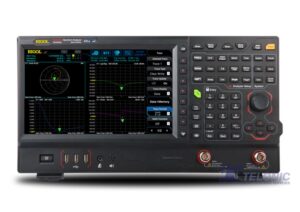

I’m going to go ahead and switch over to a different circuit, a filter circuit, just to show you the utility of a tracking generator.

If you have a correction factor file you can load it in, and it will adjust the amplitude based on frequency, depending on that correction factor. This analyzer can correct data for you in real time.
Dsa815 correction factors generator#
If you’ve never used a tracking generator before they’re very handy for determining correction factors. This unit also has a tracking generator built in. You can see that it’s detecting any additional peaks that show up, and it’s updating frequency and amplitude in real time. Now, if I want to go ahead – and I only have one peak here, but if I want to – I can say I want to go to peak, and I want to turn on my peak table. Since I know it’s a pretty narrow signal I can keep dialing down like this, or go right down here and say I want to go down to 10 mhz. Now I am going to zoom in on that signal, I’m going to dial this band down. To do this put the marker on it and hit marker to center frequency. Since I want to measure it the first thing I’d do is put the marker on it by choosing the peak button, and the second thing I want to do is center my analyzer on it. To illustrate just how easy it is to get right to work with this analyzer, I have a 950 mhz signal input into the analyzer. On the left you’ll see some status indicators, and those will tell you what kind of detector you’re using, what mode your traces are in, and other settings. I didn’t need to go through the documentation, dig through it to find different settings, or different modes that I could put the analyzer in it was all very familiar to me. I’ve used Agilent Spectrum Analyzers a lot in the past, and I was able to pull this out of the box, power it up, and get right to work. One of the things that I noticed when I pulled it out of the box and got it powered on, was the menu structure and the front panel buttons are very similar to those of an Agilent analyzer. USB host & device, LAN, GPIB (optional), 10 MHz REF In, 10 MHz REF Out, External Trigger Inįor the Datasheet, User Manual, or to Buy a DSA815 100 Hz Minimum Resolution Bandwidth (RBW).Typical -135 dBm Displayed Average Noise Level (DANL).It gives you a very good feeling about the build quality. Yet despite its small size it actually has some heft to it. One of the first things you’ll notice when you take it out of the box, is that it’s relatively small, especially for a spectrum analyzer. Hi, today I’m at the labs at EEWeb, and I’m looking at this Rigol DSA-815 Spectrum Analyzer, it covers a frequency of 9 khz to 1.5 ghz.


 0 kommentar(er)
0 kommentar(er)
